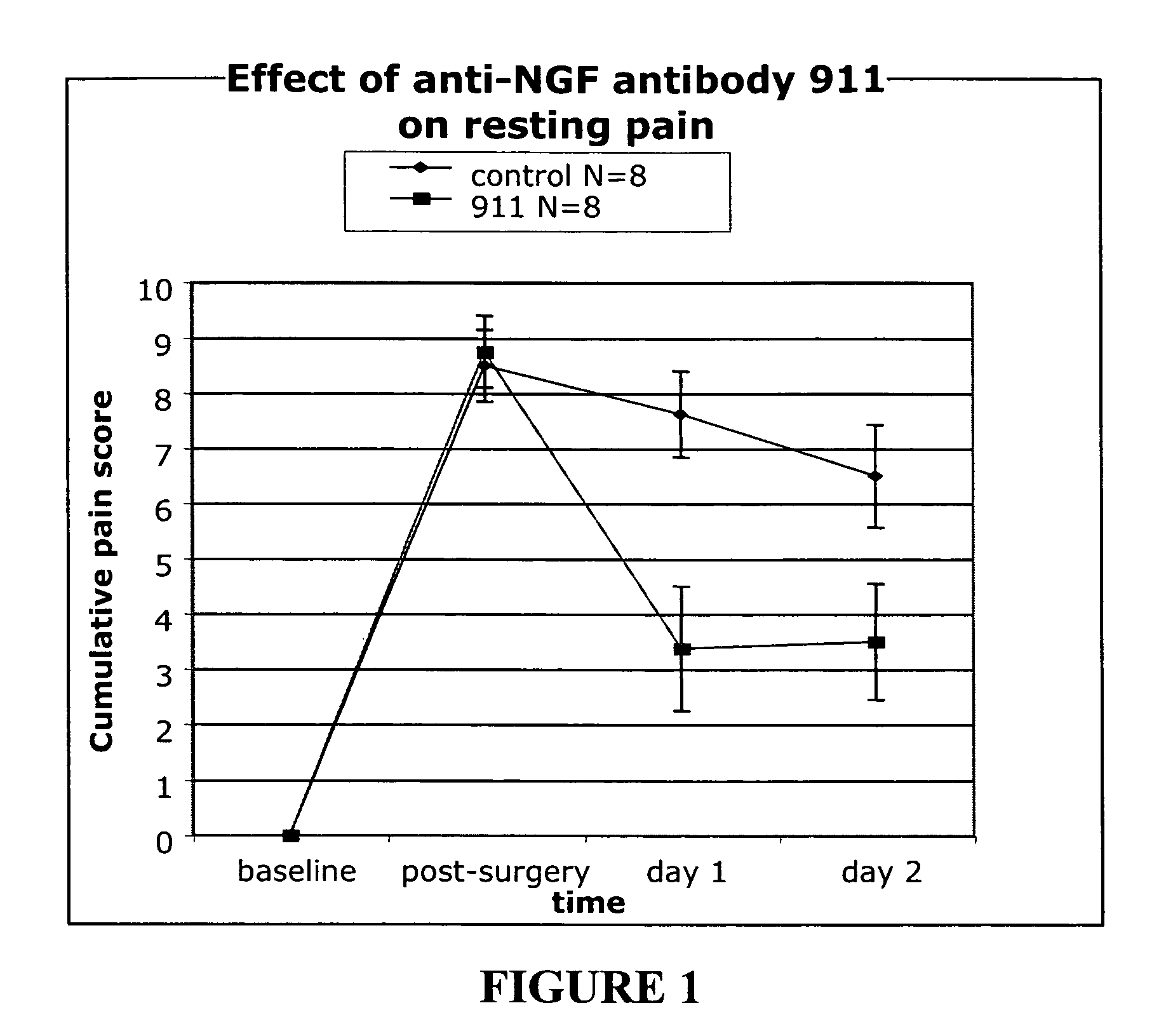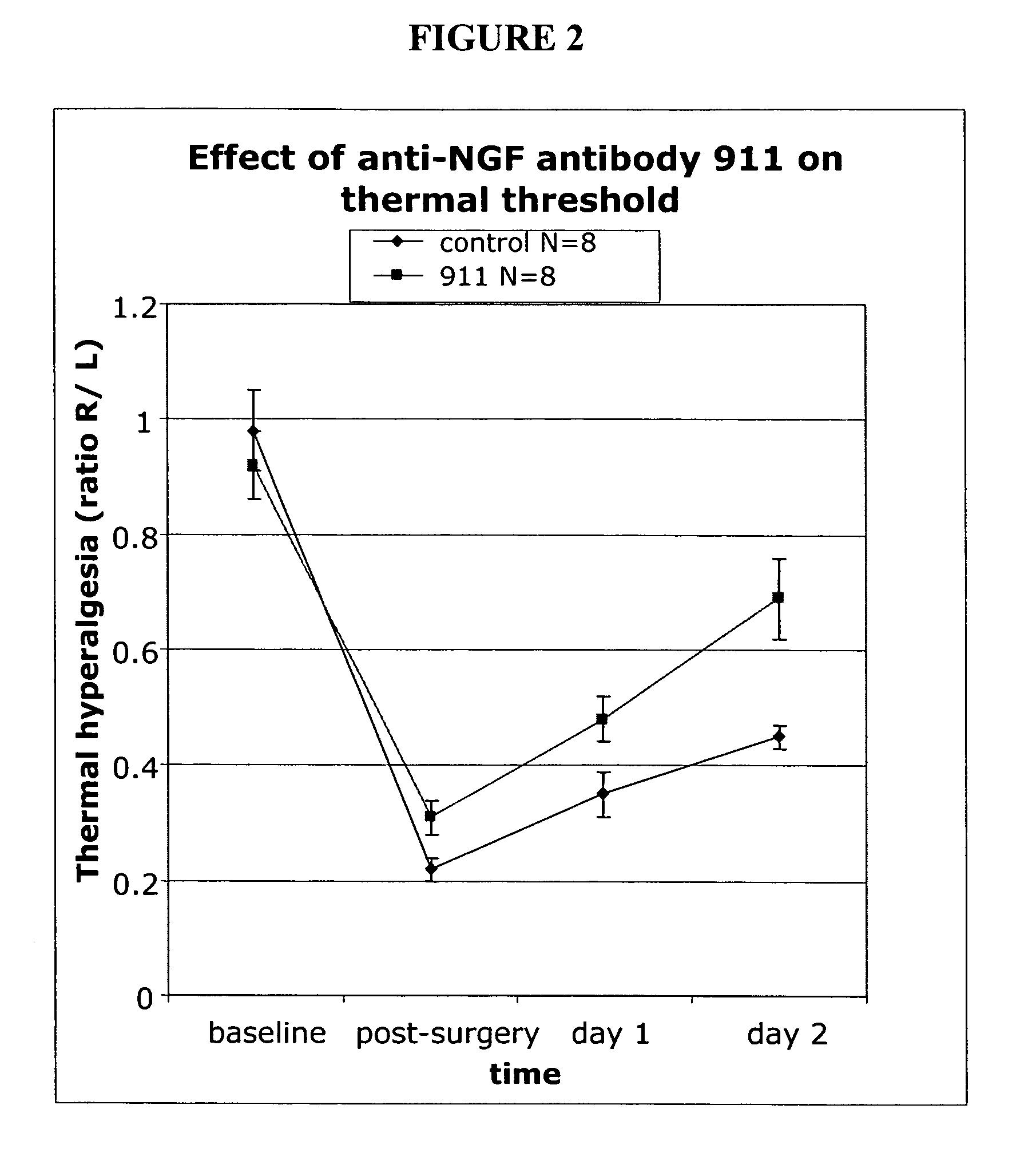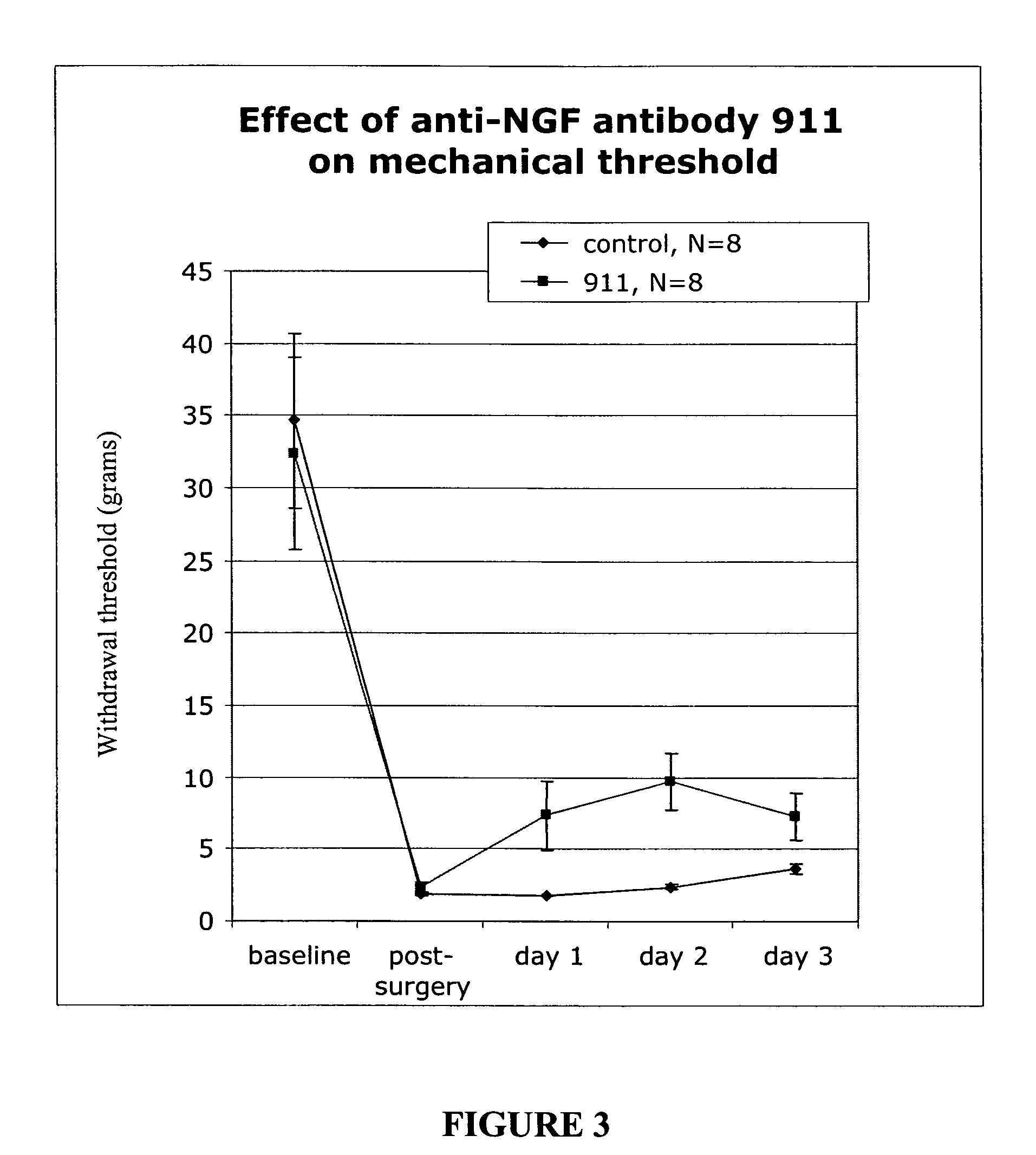Methods for treating post-surgical pain by administering an anti-nerve growth factor antagonist
a growth factor and anti-nerve technology, applied in the field of anti-nerve growth factor (ngf) antagonists, can solve the problems of prolonging hospitalization, affecting the treatment effect, so as to improve post-surgical pain, reduce post-surgical pain, and improve post-surgical pain
- Summary
- Abstract
- Description
- Claims
- Application Information
AI Technical Summary
Benefits of technology
Problems solved by technology
Method used
Image
Examples
example 1
Anti-NGF Monoclonal Antibody is Effective in Treating Post-Surgical Pain
[0169]We used a pain model that mimics post surgical pain to assess the efficacy of treatment with anti-NGF antibody 911 (a mouse monoclonal antibody; see Hongo, et al., Hybridoma 19:215-227 (2000). Each experiment involved 16 animals (n=8 per group). The anti-NGF antibody was injected intra peritoneal (i.p.) at various concentratiosn per experiment (35 or 7 milligrams per kilogram) 15 hours pre-incision. The control group received no antibody but was injected i.p. with a saline solution.
[0170]Animals. Male Sprague Dawley rats weighting between 220-240 grams were purchased from Harlan (San Diego) and acclimated to the animal facility for one week prior to surgery.
[0171]Surgery. The surgery was based on the procedure described by Brennan, et al. Pain 64:493-501 (1996). Animals were anesthetized with a 2% isoflurane in air mixture that was maintained during surgery via a nose cone. The plantar surface of the right...
example 2
Treatment of Post-surgical Pain Using a Humanized Anti-NGF Antibody and Comparison with Opioid Treatment of Post-surgical Pain
[0176]Effect of a humanized anti-NGF antibody designated E3 on post-surgical pain was tested in an animal model for post-surgical pain as described in Example 1. The E3 antibody comprises the human heavy chain IgG2a constant region containing the following mutations: A330P331 to S330S331 (amino acid numbering with reference to the wildtype IgG2a sequence; see Eur. J. Immunol. (1999) 29:2613-2624); the human light chain kappa constant region; and the heavy and light chain variable regions shown in Tables 1 and 2.
[0177]The anti-NGF antibody was injected intra peritoneal (i.p.) at various concentrations of the antibody (0.004, 0.01, 0.02, 0.1, 0.6, and 1 mg per kilogram of animal weight) at 15 hours pre-incision. The negative control group received no antibody but was injected i.p. with a saline solution. Fentanyl at 0.01 mg / kg was injected i.p. as a positive co...
example 3
Pre-surgery and Post-surgery Treatment of Post-surgical Pain with an Anti-NGF Antibody
[0179]Efficacy of an anti-NGF antibody in reducing post-surgical pain when administered post-incisionally was tested in the post-surgical pain animal model described in Example 1, using male Sprague Dawley rats purchased from Harlan (Wisconsin). Humanized anti-NGF antibody E3 (0.5 mg / kg) were injected intravenously (i.v.) two hours after incision. The control group received no antibody but was injected i.v. with a saline solution. Surgery was performed and resting pain expressed as a cumulative pain score was assessed 24 hours after surgery as described in Example 1. As shown in FIG. 5, treatment with anti-NGF antibody significantly (p<0.05) reduced resting pain at twenty-four hours after incision when the antibody was administered 2 hours post-incision. These results demonstrated that anti-NGF effectively alleviated post-surgical pain when administered after surgery.
[0180]Efficacy of an anti-NGF a...
PUM
| Property | Measurement | Unit |
|---|---|---|
| Length | aaaaa | aaaaa |
Abstract
Description
Claims
Application Information
 Login to View More
Login to View More - R&D
- Intellectual Property
- Life Sciences
- Materials
- Tech Scout
- Unparalleled Data Quality
- Higher Quality Content
- 60% Fewer Hallucinations
Browse by: Latest US Patents, China's latest patents, Technical Efficacy Thesaurus, Application Domain, Technology Topic, Popular Technical Reports.
© 2025 PatSnap. All rights reserved.Legal|Privacy policy|Modern Slavery Act Transparency Statement|Sitemap|About US| Contact US: help@patsnap.com



